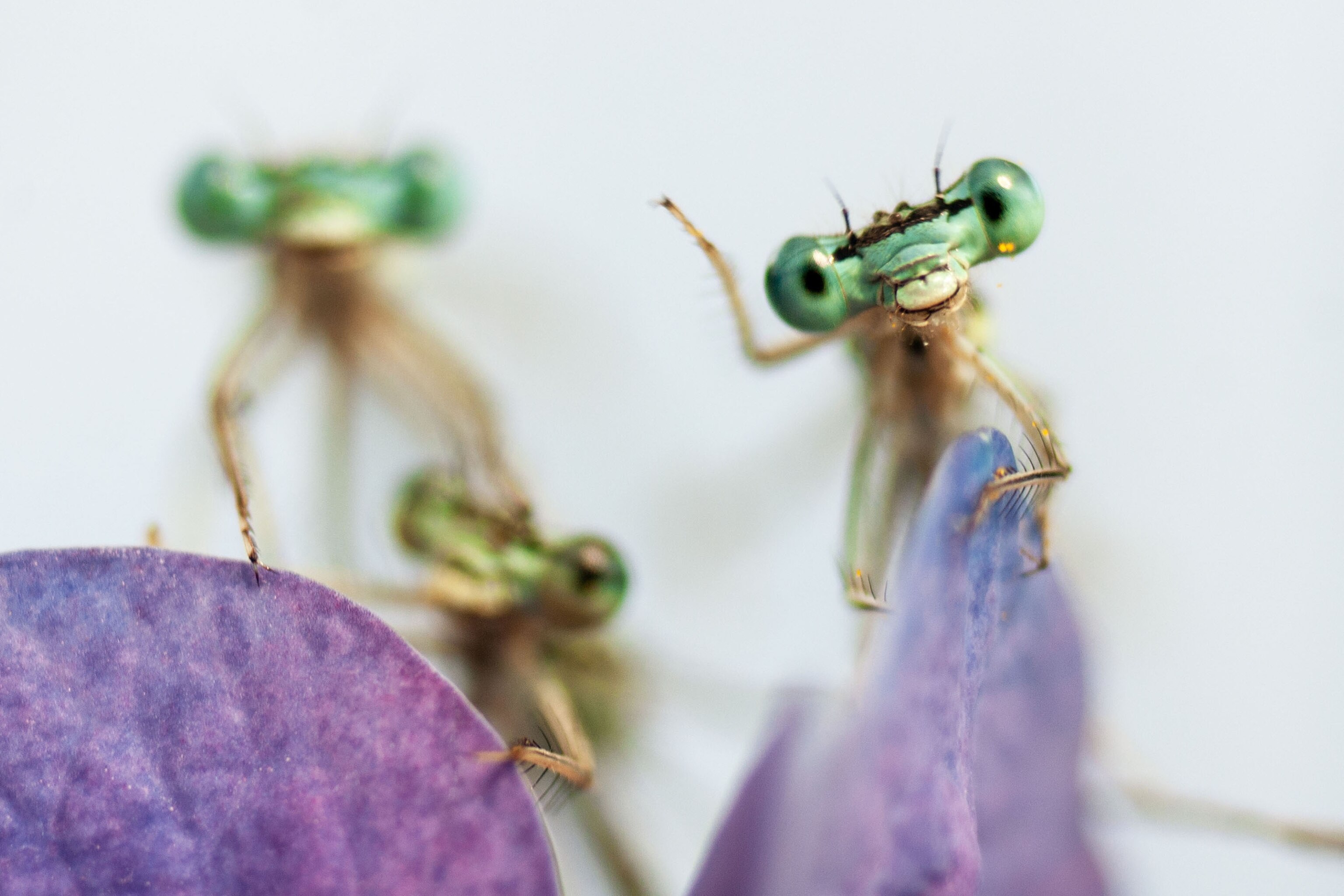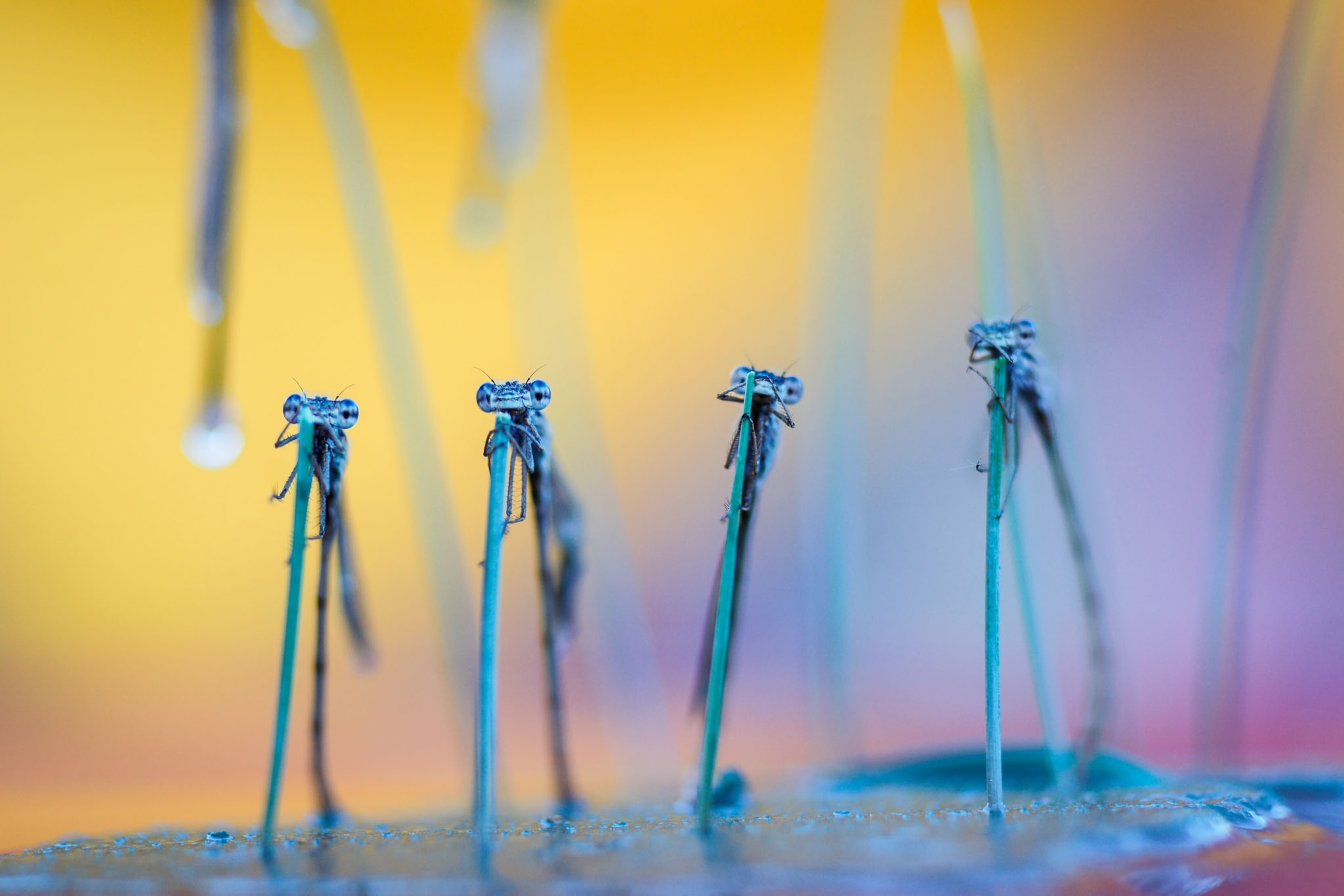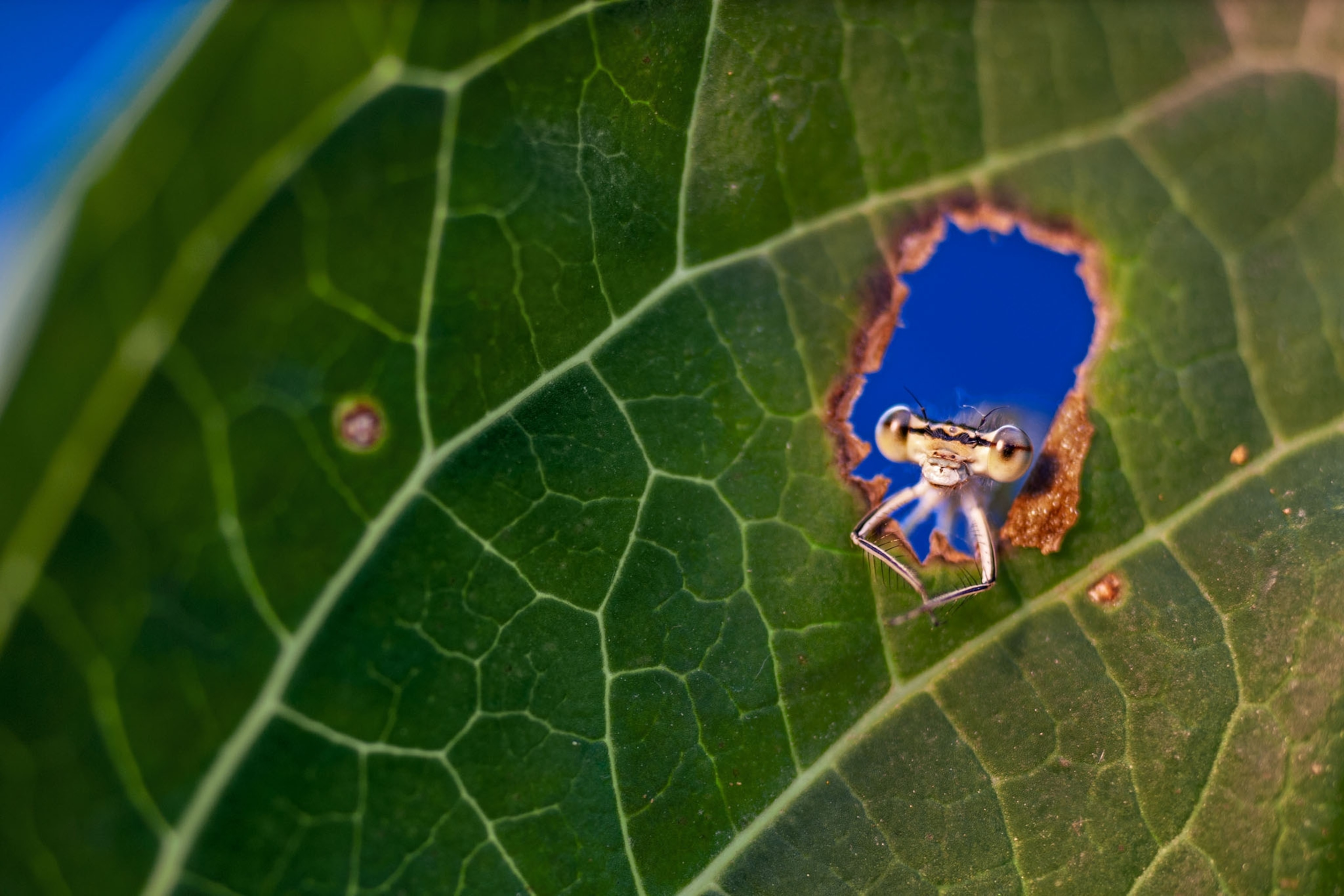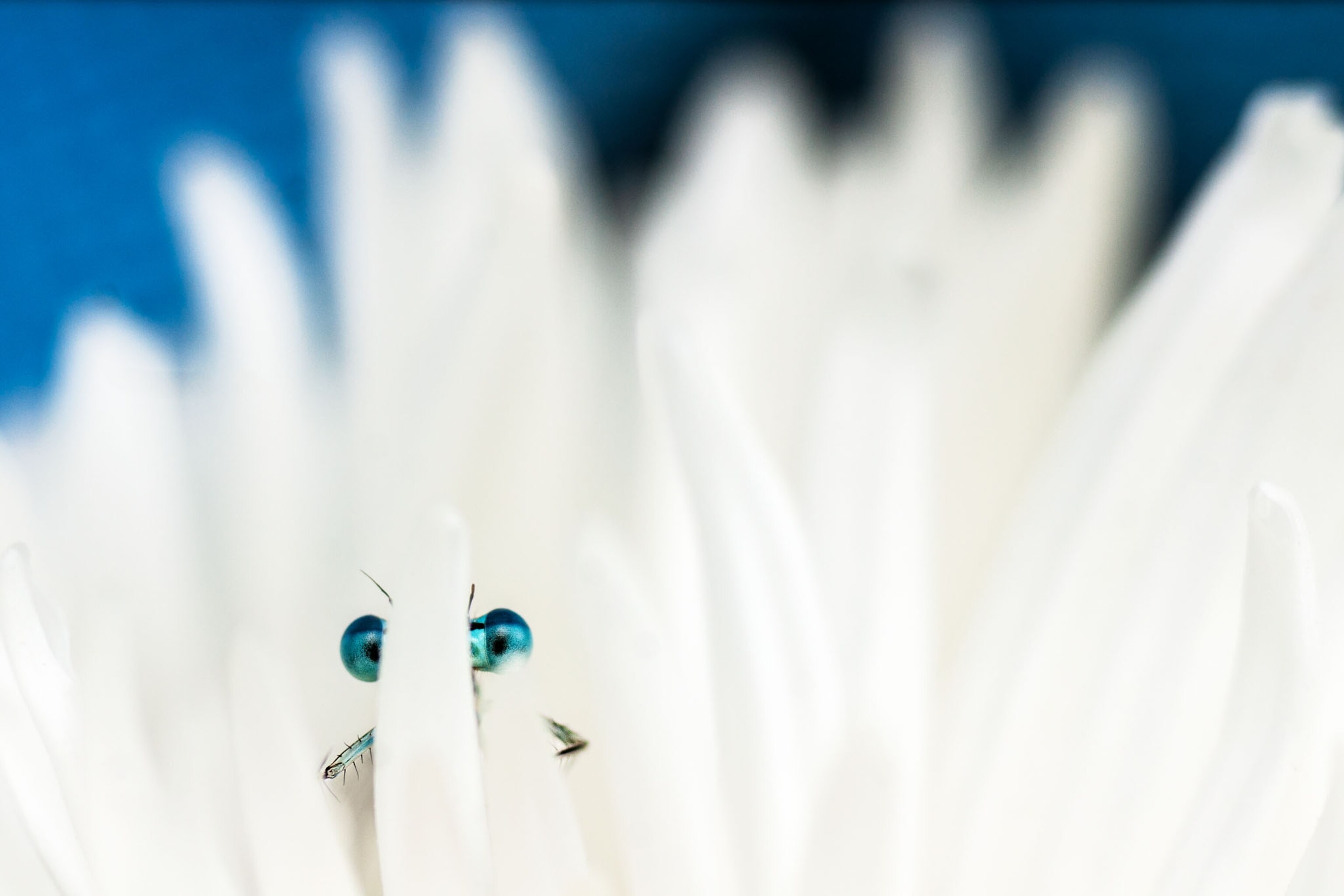First they were looking at him—and then he started looking back. Photographer Remus Tiplea noticed the damselflies perched on foliage in his garden in Negrești-Oaș, Romania. Staring with bulging eyes, the delicate insects looked inquisitive, Tiplea thought, and a little imposing. Long afternoons photographing damselflies became his summertime ritual.











Through hours of watching, Tiplea learned the behaviors of the damselflies, a close relative of dragonflies but with slimmer bodies and narrower wings. He observed when they got hungry, when they reproduced (see why female dragonflies fake death to avoid sex), and what caused them to suddenly take flight. He saw how they behaved in rain and how they chose where to sleep. With time, he could tell their gender and the dominant qualities in mate selection. If he saw multiple damselflies in one frame, he’d have a few seconds to shoot before they’d show themselves as territorial rivals (by starting to fight) or lovers. “They would ignore me completely,” he says.

As years have passed and summers have grown warmer, Tiplea has noticed fewer damselflies at his garden pond. “Their number is inconsistent,” he says—but “the important thing is that we are together in the same backyard.”
Related Topics
Go Further
Animals
- How scientists are piecing together a sperm whale ‘alphabet’How scientists are piecing together a sperm whale ‘alphabet’
- Orangutan seen using plants to heal wound for first timeOrangutan seen using plants to heal wound for first time
- What La Palma's 'lava tubes' tell us about life on other planetsWhat La Palma's 'lava tubes' tell us about life on other planets
- This fungus turns cicadas into zombies who procreate—then dieThis fungus turns cicadas into zombies who procreate—then die
Environment
- This floating flower is beautiful—but it's wreaking havoc on NigeriaThis floating flower is beautiful—but it's wreaking havoc on Nigeria
- What the Aral Sea might teach us about life after disasterWhat the Aral Sea might teach us about life after disaster
- What La Palma's 'lava tubes' tell us about life on other planetsWhat La Palma's 'lava tubes' tell us about life on other planets
- How fungi form ‘fairy rings’ and inspire superstitionsHow fungi form ‘fairy rings’ and inspire superstitions
- Your favorite foods may not taste the same in the future. Here's why.Your favorite foods may not taste the same in the future. Here's why.
- Are the Great Lakes the key to solving America’s emissions conundrum?Are the Great Lakes the key to solving America’s emissions conundrum?
History & Culture
- These were the real rules of courtship in the ‘Bridgerton’ eraThese were the real rules of courtship in the ‘Bridgerton’ era
- A short history of the Met Gala and its iconic looksA short history of the Met Gala and its iconic looks
- Meet the ruthless king who unified the Kingdom of Hawai'iMeet the ruthless king who unified the Kingdom of Hawai'i
Science
- Why trigger points cause so much pain—and how you can relieve itWhy trigger points cause so much pain—and how you can relieve it
- Why ovaries are so crucial to women’s health and longevityWhy ovaries are so crucial to women’s health and longevity
Travel
- What it's like trekking with the Bedouin on Egypt's Sinai TrailWhat it's like trekking with the Bedouin on Egypt's Sinai Trail




